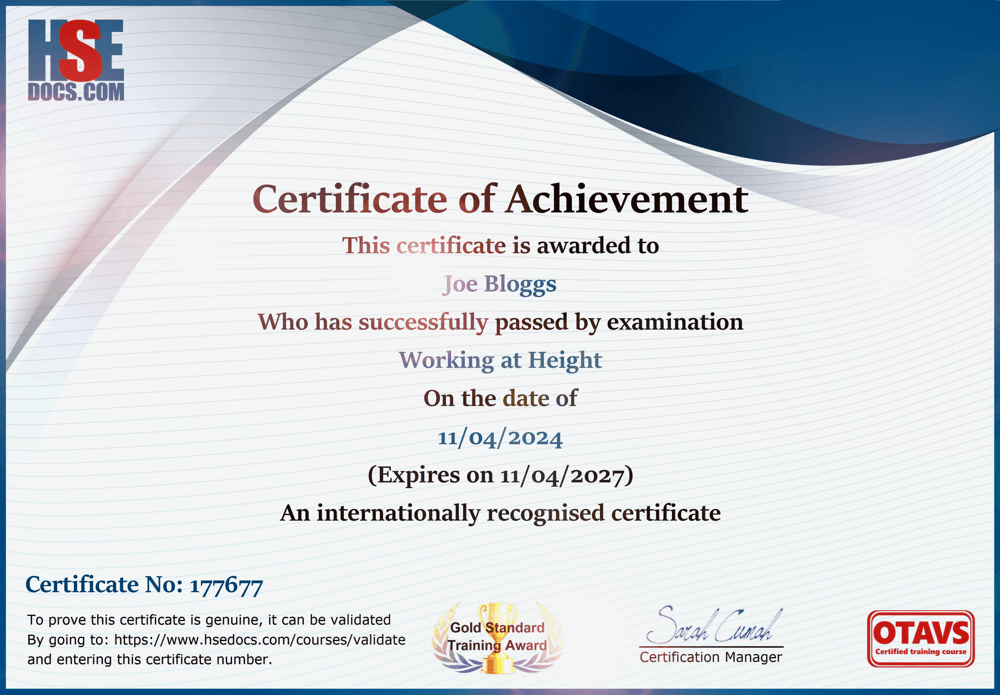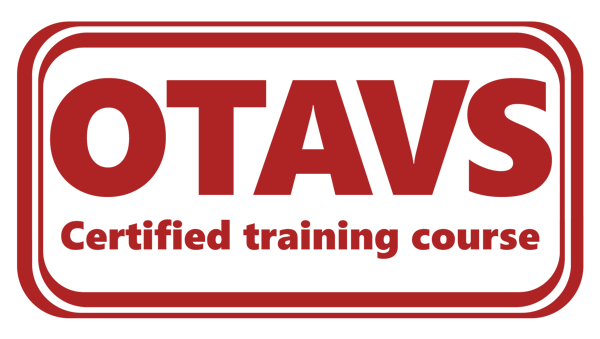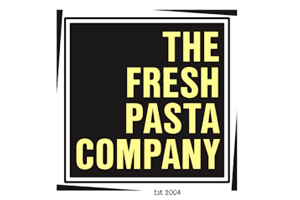Online Level 2 Food Hygiene Course
AKA Food Safety Level 2
Food hygine certificate valid for 3 years
Internationally accredited training
Online Safety training by HSEDocs.
Covering UK and Scottish food laws.
HSEDocs provides a Level 2 Hygiene training with an internationally recognised certificate for individuals responsible for handling and serving food to the public.
This comprehensive course covers all essential topics related to food hygiene, guaranteeing that you acquire the necessary knowledge and skills to handle food safely and hygienically. Upon finishing the course, you will receive a certificate of proficiency for level 2 safety standards.
£9.99 for an individual course, £6.49 if you buy 10 or more, and just £4.99 for bulk orders of 50 or over.
This course is accredited and certified by OTAVS.
Online Training Accreditation & Verification Service
Course duration: Between 1 ½ and 2 ½ hrs depending on learning speed.
Course format: Three video training modules, with a multiple-choice section at the end of each module.
Entry Requirements: Anyone can complete this hygine certificate, whether they have previous experience or not.
If you work in a cafe, chip shop, restaurant, mobile catering unit, hotel kitchen, hospital kitchen, school kitchen, college kitchen, or outdoor cooking events, then this level 2 hygine certificate is for you.
After completing your online safety course, your training certificate will be valid for three years. It is internationally recognised and counts towards your Hygiene Rating.
All successful candidates are entered on the national training register, and certificates can be verified by employers or others to prove that they are genuine by clicking Validate a Certificate and typing in the certificate number.
Overview of HSEDocs Level 2 Food Hygiene Course
The learning topics covered in this course include:
- Personal and kitchen hygiene.
- Risk assessment and control measures.
- Temperature control and its importance.
- Cross-contamination risks.
- Food hazards and how to avoid them.
Learning about personal and kitchen hygiene is essential because it emphasises the significance of maintaining cleanliness. It highlights the potential outcomes of overlooking the strict standards necessary to protect foodstuffs from hazards caused by poor hygiene.
The section on risk assessments involves identifying and analysing potential risks in the catering environment, understanding the reasons for conducting these assessments and implementing specific control measures to minimise or eliminate these risks. This process is crucial for ensuring the safety of both customers and staff and for maintaining high safety standards within the industry.
Cross-contamination poses a significant risk of food poisoning, and this section provides a comprehensive exploration of all potential sources and consequences of cross-contamination.
The final section deals with avoiding hazards using HACCP (Hazard, Analysis, Critical, Control, Point) to record, monitor, and reduce probable risks.
Our Level 2 online Hygiene certificate is internationally recognised and counts towards your Hygiene Rating, which you can find out more about in our latest blog - ‘Your Guide To Food Hygiene Ratings.’

Maintaining good hygiene standards is essential for safeguarding public health, and a level 2 food hygiene course provides the necessary knowledge to implement best practices, reduce contamination risks and keep customers safe.
The training covers personal and workstation cleanliness, storage techniques, cross-contamination risks, and controlling temperatures.
Current training is important because it keeps you up-to-date on hygiene regulations that help protect public health and which businesses must follow when handling, storing, or preparing foodstuffs.
Non-compliance with these regulations is taken seriously and can result in significant consequences, such as hefty fines or even the closure of the business. Therefore, restaurants and caterers must have a solid understanding of safety requirements and only employ staff with current and up-to-date training certificates.
If you're involved in cooking or food-handling within retail or hospitality, getting a Level 2 Hygiene certificate is essential. This credential demonstrates your expertise in safe practices, including personal hygiene, preventing cross-contamination, and proper storage techniques.
The Level 2 Food Hygiene online course offers essential knowledge in a straightforward and engaging way. It covers a variety of topics, ensuring that learners grasp the key principles vital for upholding safety standards. Participants will discover the significance of proper hygiene practices in safeguarding food safety and preventing foodborne illnesses.
Level 2 food hygiene training provides numerous benefits for both businesses and consumers. A significant advantage is enhancing an outlet's safety standards, which directly impacts the public health of its customers by promoting and maintaining high standards. A clean, well-maintained, and professional approach encourages customer loyalty and creates positive advertising through social media posts and word-of-mouth.
A good food hygiene course teaches you the basics of keeping foodstuffs safe. One main focus is spotting safety hazards. This means learning about the different types of risks, like germs, chemicals, and physical objects, that can mess with food safety. Knowing how to handle foodstuffs properly is super important, too. You’ll pick up tips on how to avoid cross-contamination and make sure foodstuffs are cooked and stored at the right temperatures.
This course highlights personal hygiene. It stresses simple yet essential practices such as washing your hands regularly, wearing fresh uniforms, and using protective gear to maintain safety and cleanliness. Participants also acquire useful cleaning and sanitising techniques.
Pest control is also explored in detail, as pests can be a significant source of contamination. Participants learn to recognise signs of pest activity and implement control measures to keep these unwanted visitors at bay.
The course examines the importance of maintaining proper documentation and records. Keeping detailed records of cleaning schedules, pest control measures, and temperature logs is essential for compliance and for identifying any issues that might arise.
Maintaining a high standard of personal hygiene is crucial for anyone working in a food-handling environment to ensure the safety and well-being of consumers. Maintaining strict hygiene protocols not only safeguards public health but also minimises the risk of foodborne illnesses, and in settings where foodstuffs are prepared or handled, it is essential for all personnel to wear appropriate protective clothing. This should be clean, free of stains or contaminants, and designed to prevent any cross-contamination of food products. It is advisable to avoid long sleeves and loose-fitting garments, as they can trap bacteria or become caught in equipment.
When preparing or handling foodstuffs, securing hair properly is imperative. Neatly tying hair back and wearing a suitable head covering, such as a hairnet or hat, helps to prevent hair from falling into foodstuffs. And, all jewellery should be removed before starting work as jewellery can harbour bacteria and may also pose a physical risk, such as becoming a choking hazard or getting entangled in equipment.
Learn more about personal hygiene in the FSA’s ‘Safer Food, Better Business For Caterers Pack'.
The Management of Health and Safety at Work Regulations 1999 states that employers must protect workers and any other people who may be affected by their business activities from harm.
Regulation 3, specifically states that every employer shall make a suitable and sufficient assessment of—
(a)the risks to the health and safety of his employees to which they are exposed whilst they are at work; and
(b)the risks to the health and safety of persons not in his employment arising out of or in connection with the conduct by him of his undertaking.
Training will help you understand the importance of this legislation in a food environment and what can go wrong if it’s not followed.
Ensuring food safety involves meticulous temperature control throughout various phases of food preparation and storage. It is essential not only to reheat meals stored in the refrigerator to the correct temperature but also to grasp the full spectrum of temperature management in food hygiene. This includes key processes such as cooking, where foods must reach safe internal temperatures to effectively eliminate harmful bacteria; hot holding, which maintains prepared foods at safe temperatures until they are served; and reheating, which must be done thoroughly to eradicate any pathogens that may have developed during storage.
Correct refrigeration is imperative for slowing bacterial growth, while cooling should be executed rapidly to bring the temperature of hot foods down to safe levels, ideally within two hours. Freezing is another method that preserves food and prevents spoilage, while defrosting ought to be carried out safely, preferably in the refrigerator or under cold running water, to minimise any risk of bacterial growth. Each step in this temperature control process is key to ensuring the safety and quality of the food we consume.
Ensuring food is at or reaches the correct temperature during different stages of preparation and storage is essential in maintaining food safety.
More about temperature can be learned from the temperature control pages on the FSA website.
Food hygiene training provides knowledge about the importance of maintaining safe temperature zones. One of the greatest risks associated with poor temperature control is the threat of food poisoning, a serious health concern that can arise from consuming food contaminated with harmful pathogens such as bacteria, viruses, parasites, toxins, or allergens.
Food poisoning primarily occurs when individuals consume contaminated food, with bacteria and viruses being the most prevalent offenders. Contamination can take place at various stages, including improper cooking or insufficient reheating, which can allow these harmful organisms to thrive.
Preventing cross-contamination is crucial in avoiding food poisoning. Unfortunately, it can occur inadvertently and remain unnoticed until food is ingested, so learning the possible routes of contamination is a measure taught in our Food Hygiene Level 2 course.
Here are some measures to help prevent cross-contamination:
-
Good hygiene practices
Presuming you are suitably dressed and have removed jewellery, etc..… this is primarily about washing your hands after handling raw meat, high-risk foods, using the restroom, or engaging in similar activities. -
Use separate equipment
Employ distinct knives, colour-coded chopping boards, plates, and utensils for different types of food. Promptly wash all utensils and dishes that have come into contact with raw meat, poultry, or fish. -
Maintain clean surfaces
Regularly clean surfaces throughout the day, particularly after food preparation activities. -
Properly store food
Store raw meat in sealed bags or containers on the lower shelves of your refrigerator and cooked food on the top shelves. -
Wash produce
Always wash fruits and vegetables, even if peeling them. However, avoid washing raw meat and poultry before cooking, as this can spread bacteria in your kitchen.
To determine the level of food hygiene training you need, consider your job role and daily tasks. According to EC Regulation 852 , your training should correspond to your job responsibilities. We have created a useful guide that will help you understand the appropriate level of food hygiene training required for restaurant settings.
| Food Hygiene Level Guide | |
|---|---|
| Front of House & Wait Staff | Level 1 |
| Porter & Assistants | Level 1 |
| Line Cooks | Level 2 |
| Kitchen Managers & Supervisors | Level 3 |
| Restaurant Owners or Ops Managers | Level 4 |

Contact Our Food Health & Safety Experts
We are always happy to help here at HSEDocs, so if you have any questions or concerns about the online Food Hygiene course or any other HSEDocs online training queries, please give us a quick call.

 CART
CART 














